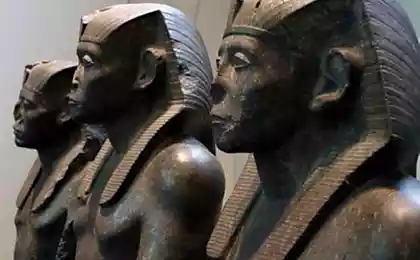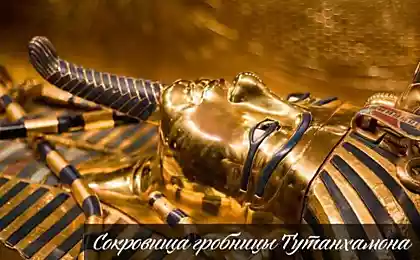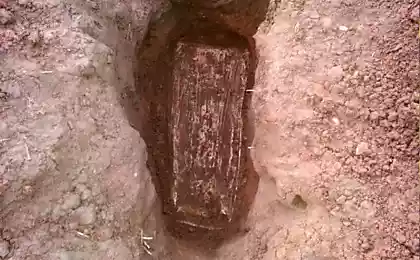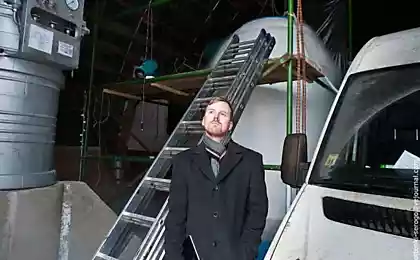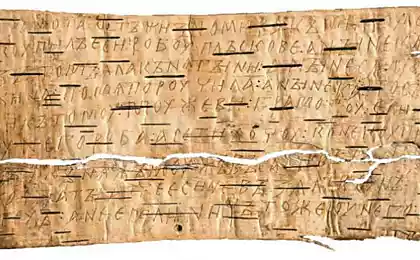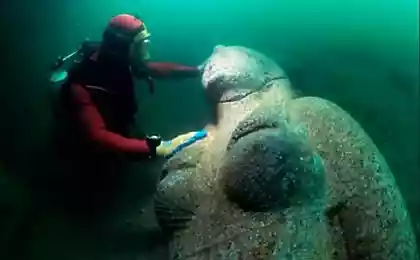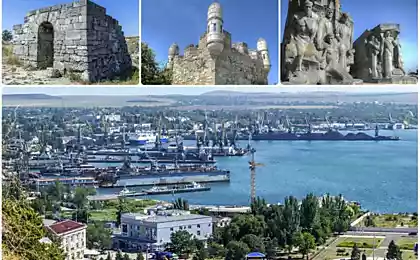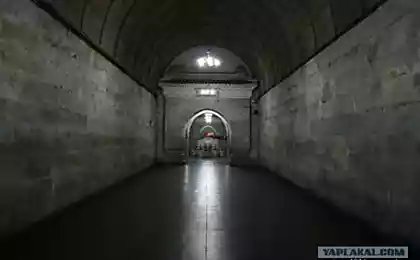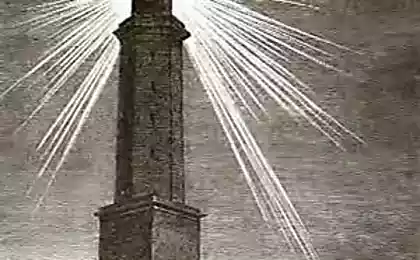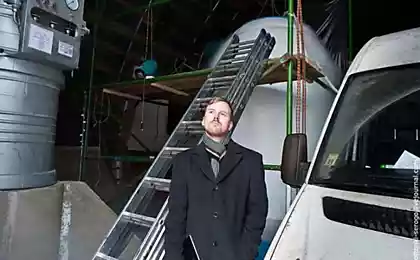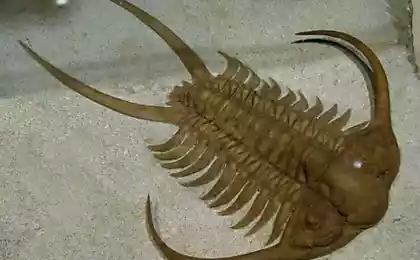2539
Ancient Egyptian sarcophagi
So, continue to acquaint you with interesting ancient Egyptian sarcophagi that concern. Something happened in the first theme. Now we go on. Photos are many copyrights.
Maybe somewhere I could be wrong, but it can always be corrected.
via
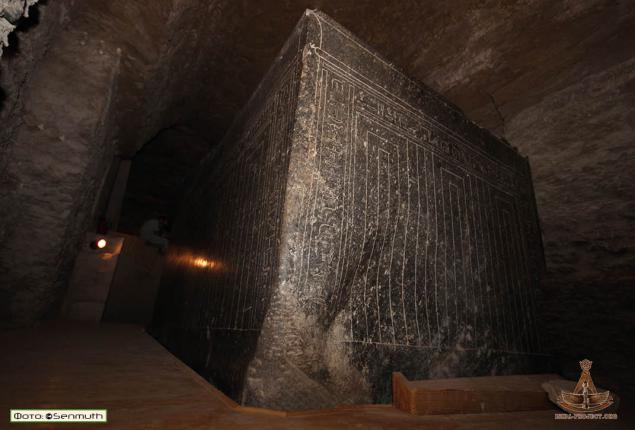
Sarcophagus of Djoser
Let's start with the pyramid of Djoser. Speed, the very first pyramid. And it is the first sarcophagus, but he is not quite familiar to us. Given the form in which the structure is now making a good description is not easy.
Inside undergoing restoration, and the sarcophagus itself is surrounded by scaffolding (there probably is not wood, and the design for the descent down). The sarcophagus is not monolithic, like all others, and is built of granite beams; in size (roughly 4x4 m) is more like a crypt. Find a complete description still fails, but it is a matter of time, after all, the pyramid complex and its well studied.
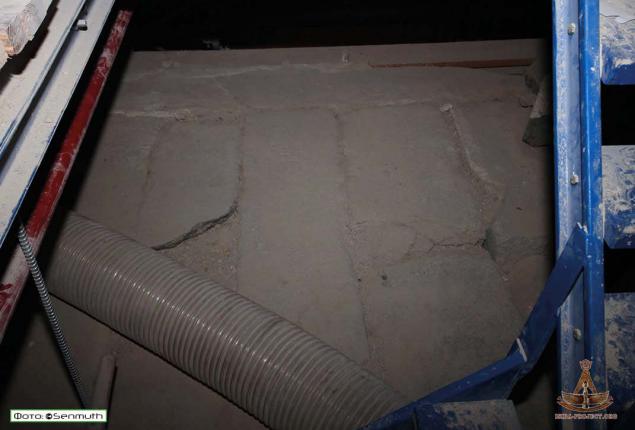
To get to the pyramid of Djoser failed, so there are any, but their photos.
The sarcophagus is located at the bottom of the shaft inside the huge building. Of course, I want to describe oschueniya inside the pyramid ... there is much darker than any pyramid in Egypt. Mine (approximately 10x10 m) in pretty bad condition; lead somewhere dilapidated moves ... stones hang, threatening to fall at any moment. Returns to the reality of the design of the red-blue "forests". Otherwise - a full immersion into the depths of the ancient and very dark buildings.
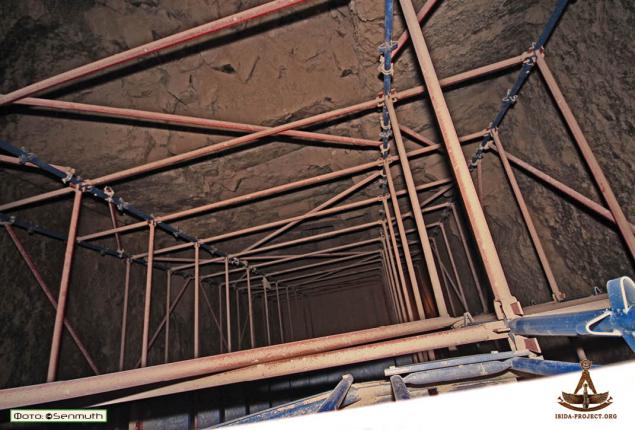
This is the first (or one of the first) massive sarcophagi of ancient Egypt.
Stone fallen from the top is still sticking in the "wound" sarcophagus.
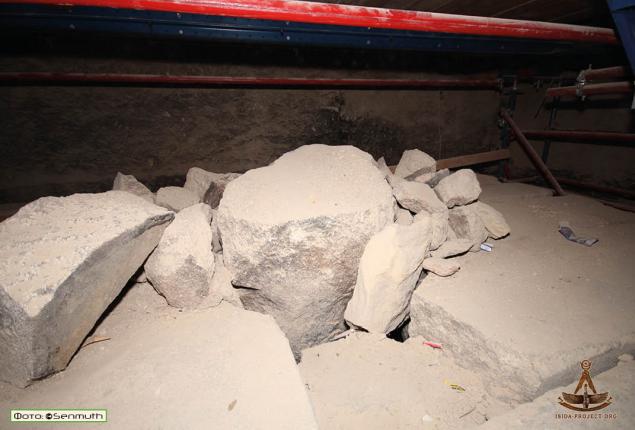
Old photo. Here's mine without design
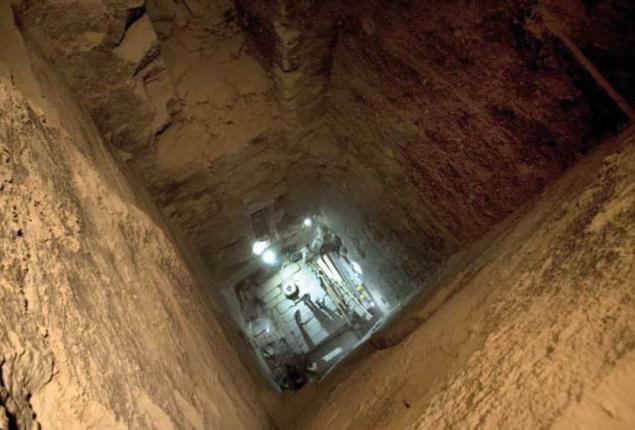
Dock of the film photo. On the sarcophagus.
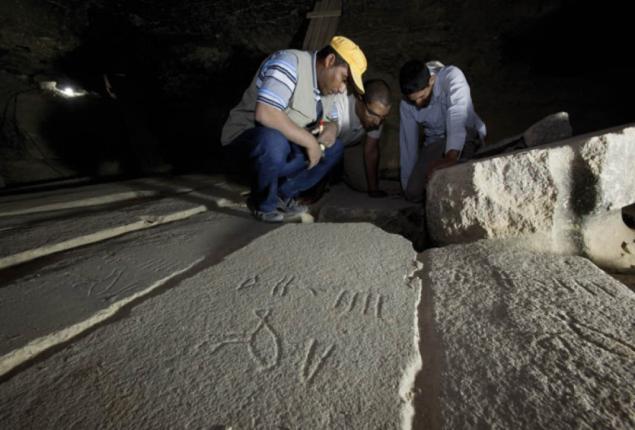
Landslides bury the sarcophagus ...
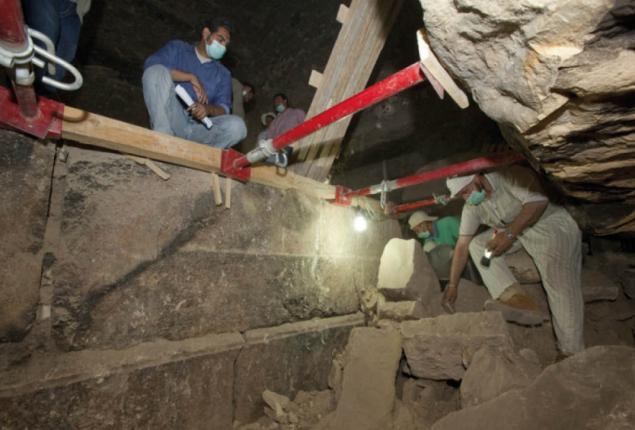
Sarcophagus Sekhemkhet
Successor Djoser Sekhemkhet began to build a similar step pyramid, but because of the fact that, most likely, he did not return from a military campaign to Sinai, the pyramid was left unfinished, and, in addition, was sealed. When she unearthed in the last century Ghoneim, all thought to be in a sealed sarcophagus mummy of Pharaoh ... Everyone was waiting for the opening of Tutankhamen in the spirit ... but the sights of dozens of cameras, open the sarcophagus was completely empty. Alas, though the discovery of the pyramid was an important point in Egyptology, Ghoneim was driven to suicide.
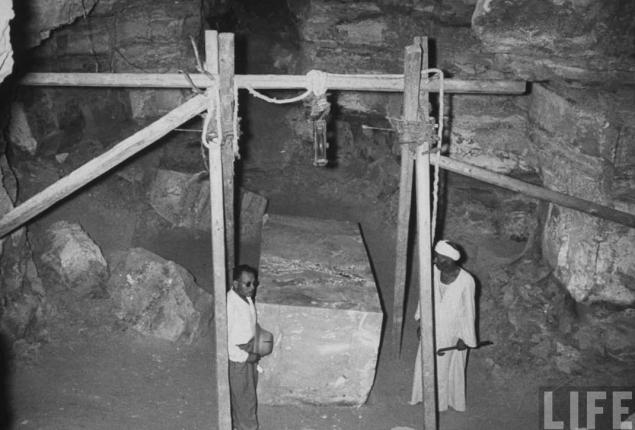
Get inside there is no way: the entrance was buried under a mass of sand, mine, too, is likely to fall asleep. Given that the passages were so dilapidated and out of a number of earthquakes there generally is not known in what state it is still closed even for researchers.
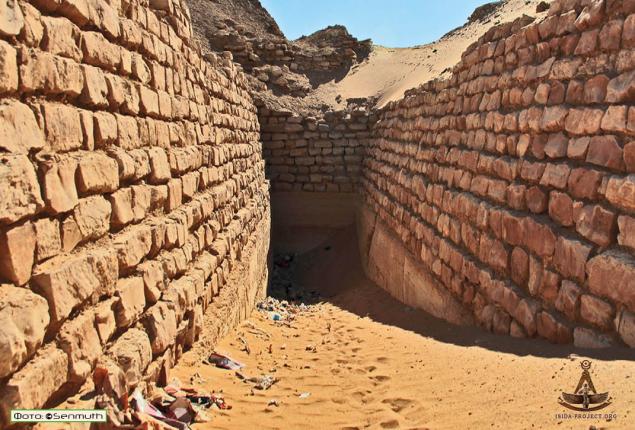
Photos from the book Ghoneim "Lost Pyramid»
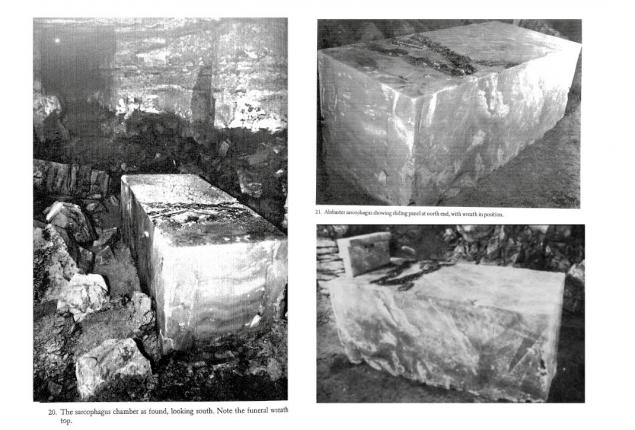
Unprepossessing burial chamber with the alabaster sarcophagus.
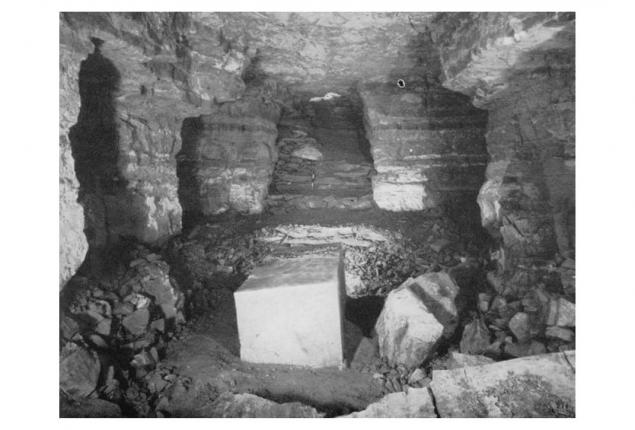
The interesting catch that is not familiar to Egyptian sarcophagi
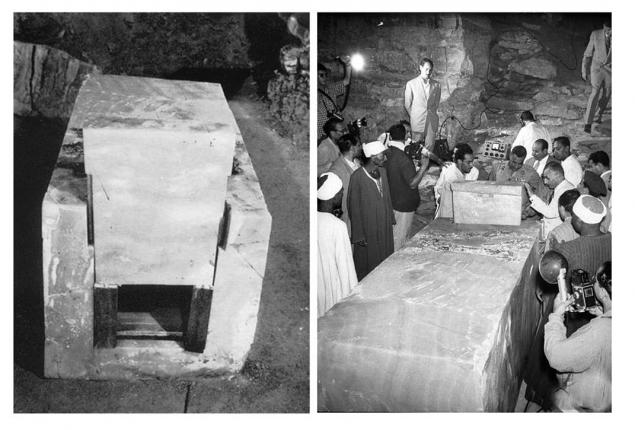
Images from the dock. film, where Hawass climbs in Buried Pyramid and watches Where did the mummy of the king))
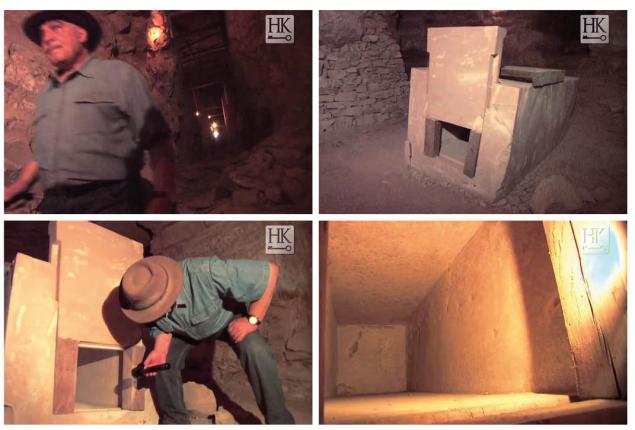
Mastaba 17
Nameless Mastaba at Meidum pyramid.
But who knows, and the interior is like a pyramid, maybe it was a cult pyramid, which is then redrawn at a later burial.
Inside the massive granite sarcophagus.
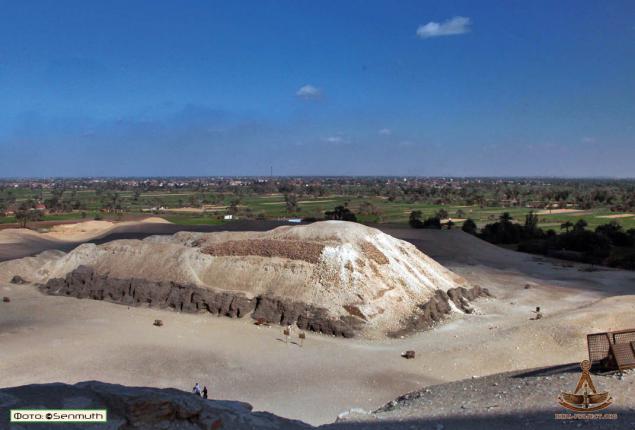
The lid ajar, propped ancient wooden mallet is likely or robbers, or researchers. Already a classic look, but treated fairly rough.
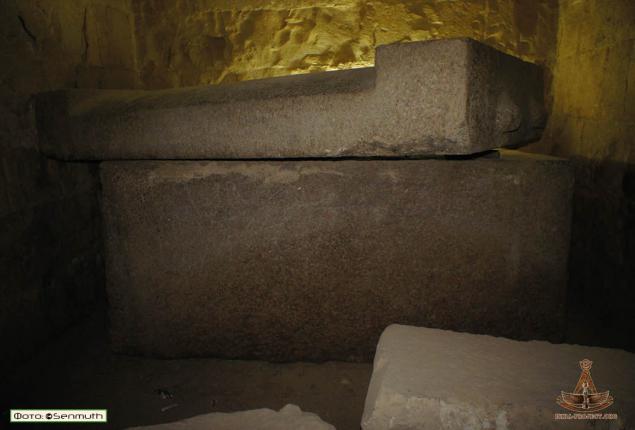
Neither inside nor outside any inscriptions or ornaments.
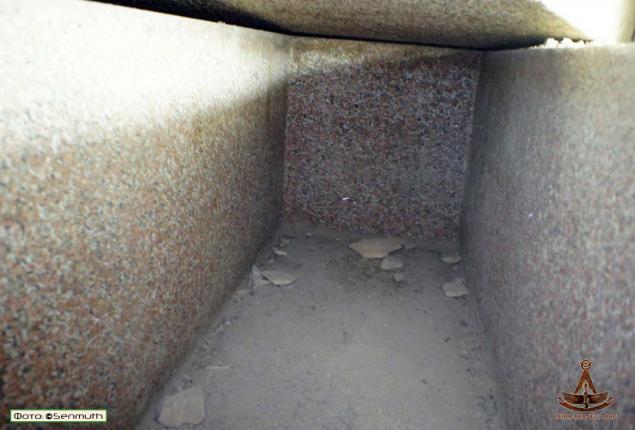
One of the first sarcophagi of ancient Egypt in all its glory, is close to the classical forms of stone sarcophagi.
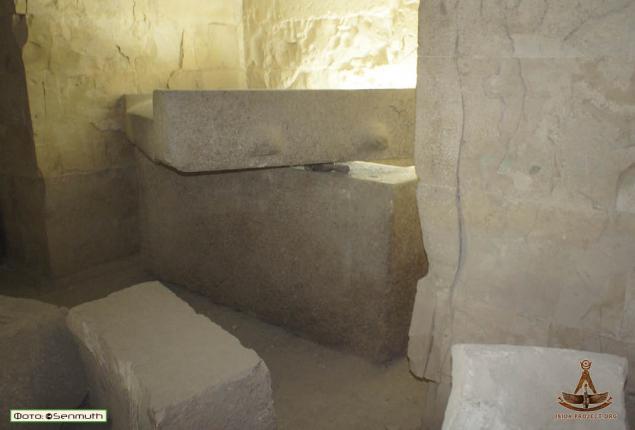
The sarcophagus in the pyramid at Saqqara Tatie.
Partly destroyed pyramid friend Tatie of 6 dynasties. It was 5-6 in the era of the dynasty, in some pyramids is the "Pyramid Texts." The sarcophagus of basalt. The cover is not shifted, but the piece already broken out to get to the content.
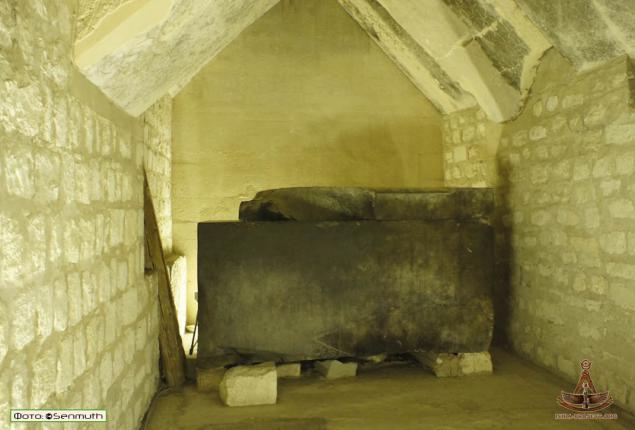
Magic formula, specifying what to do in that light, etc. Ie in fact, this is the first set of Book of the Dead on the walls of tombs. The ceiling of the plurality of stars.
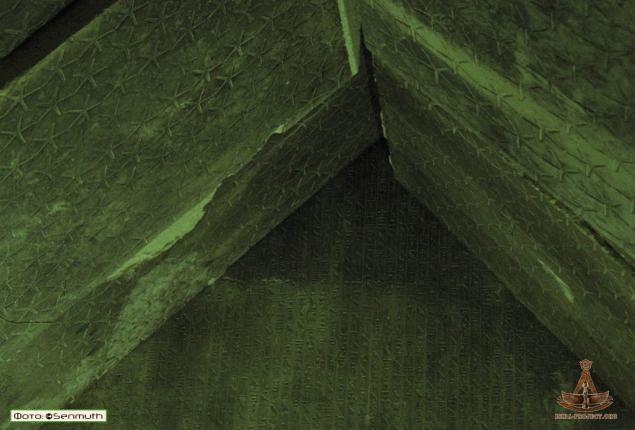
Inside there are already signs. Processing as we see a fairly simple, tapping traces visible to the naked eye.
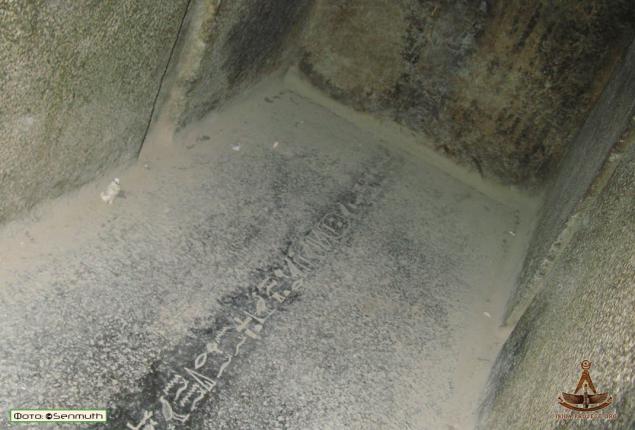
But on the reverse side there is a track around which otlantovedy excited, me and one time too.
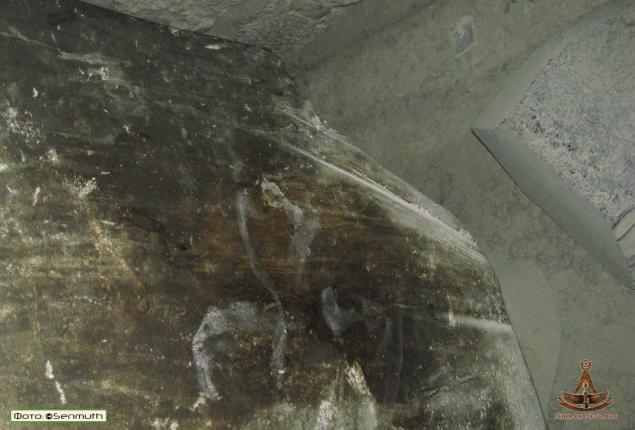
Giza. Entrance to the tomb Seshemnefera, a senior official of the fourth dynasty.
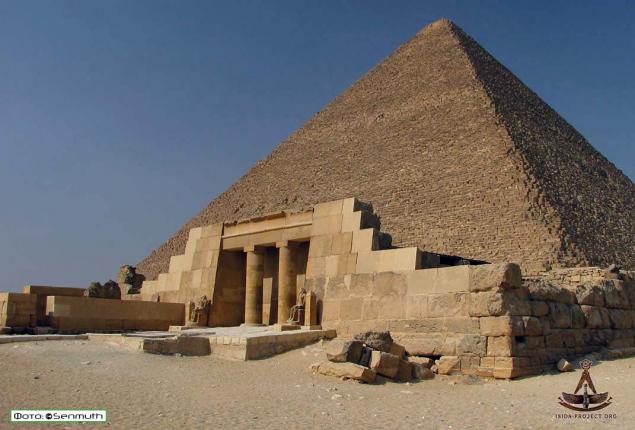
Inside the sarcophagus. The lid ajar.

As we can see, and it is pretty rough treatment and corresponds to the epoch of the pyramid builders.
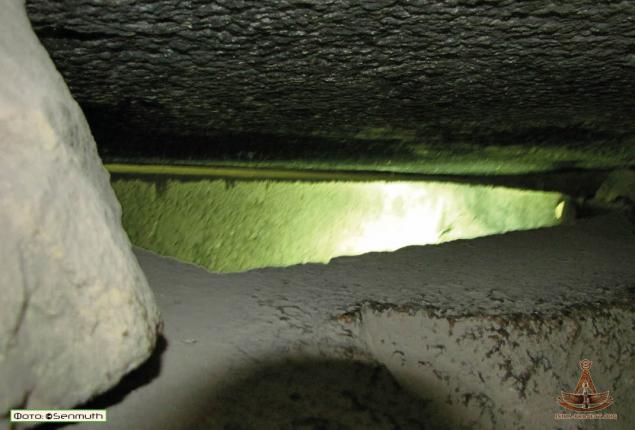
Headless Pyramid at Saqqara (presumably Pharaoh Merikare, 6 or 10 Dynasty). And what is left of the sarcophagus. Once the lid. But what. Here it affects the quality of performance. Carp almost to nothing. The pyramid was first discovered by the German archaeologist Karl Lepsius in 1842 and named the "Headless Pyramid" because of the total absence of its outer part. Only in 2008 the team luck Zahi Hawass. It took half a year to remove the 7-meter layer of sand, 166 years dozing find Karl Lepsius.
More details here: isida-project.org/egypt_2012/saqqara_headless.htm
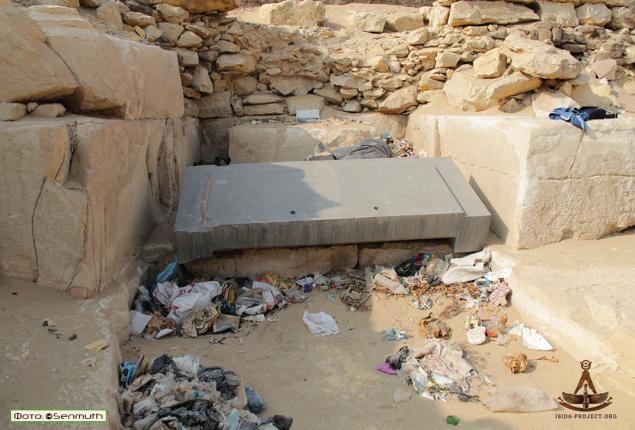
Surprisingly, the pyramid was completely destroyed, and the lid of the sarcophagus was found in excellent condition.
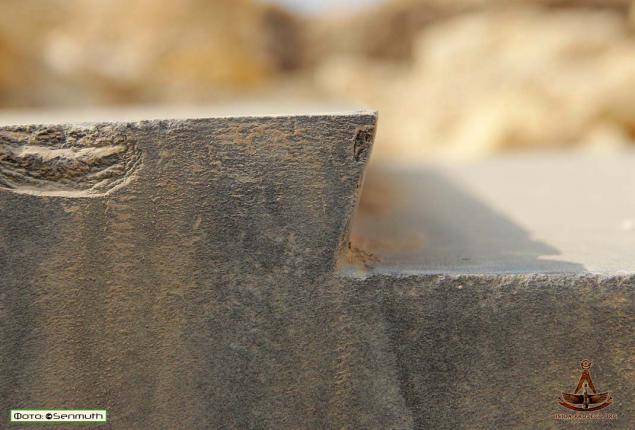
From the sarcophagus were only miserable fragments. Traces complicated, but as we can see (at closer. Pending) they are traces of manual processing with abrasive. Overall, the cap does not fit in a number of sarcophagi of the Old Kingdom.
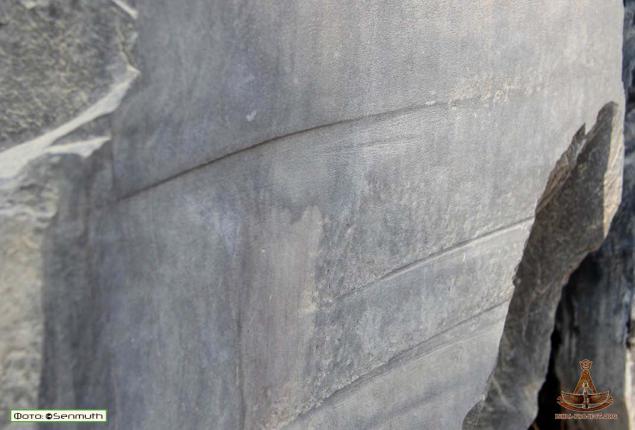
Serapeum
Sarcophagi shocking in its power, it is considered that they were not even for people to create.
Each original, the quality is also "floats» ...
Some sarcophagi (the photo), which is well show that in sight no space accuracies, which broadcast some uchOnye, dislikes Ancient Egypt and mleyuschie from green men or otlantov. This affects how people were able to create such and still ask the question: how, why all the same, and as they did, and how did that.
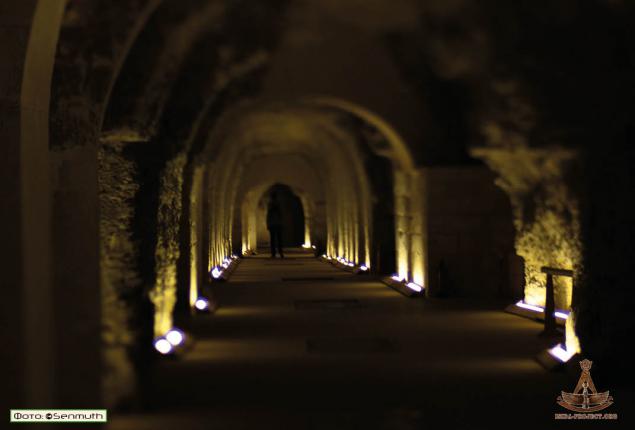
Rough handling, traces of the masons. Geometry - lame.
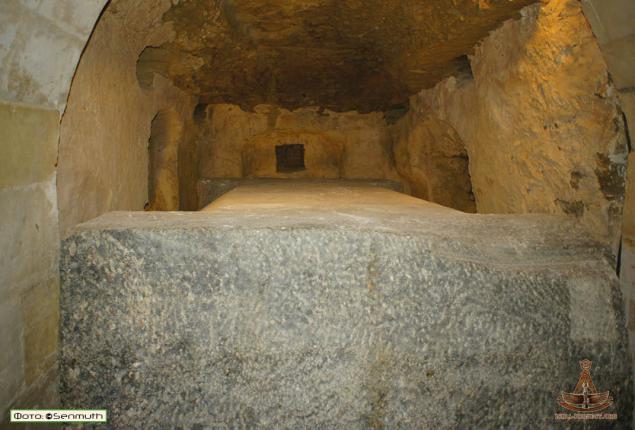
With all the massiveness seen enough gross flaws
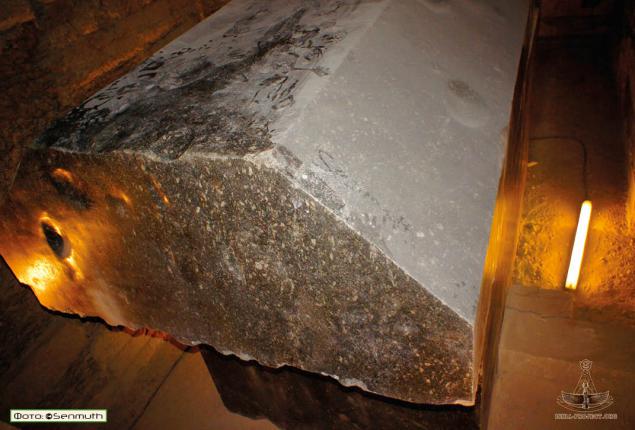
Forms stunning
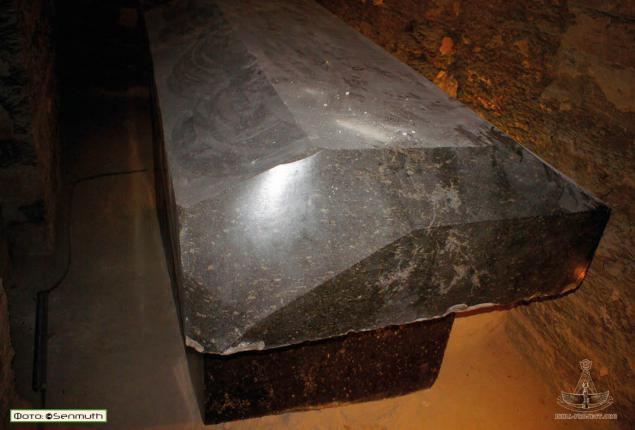
Right light shows all the flaws processing. Grind already on a curved surface.
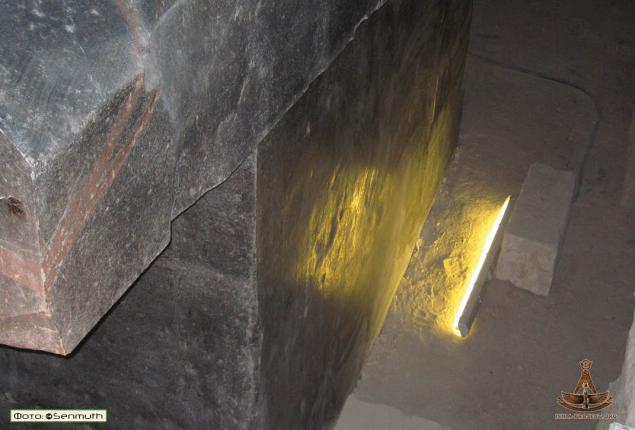
Here and without glasses can be seen that there is no perfect (super- machine, otlantskimi) processing and does not smell.
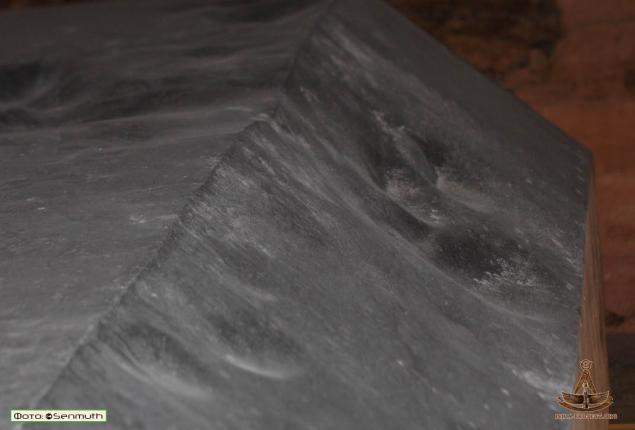
And, of course, that this masterpiece can not skip past.
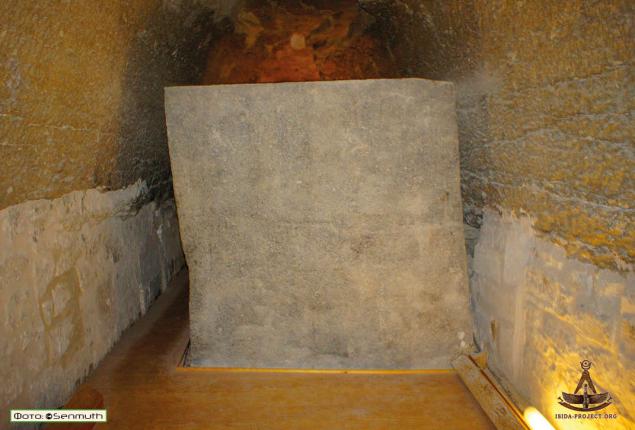
It is in the Cairo Museum.
Yes, sarcophagi are huge, they give almost no fear, and wholly admirable. Fear, because it is difficult to imagine what strength to move the creation of the "boxes", and admiration, because it did our ancestors, with a view, from which emanates a hidden beyond the grave horror
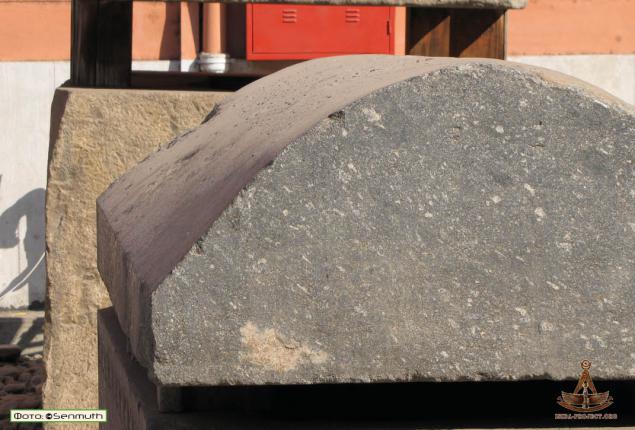
And finally, that there was quite sad.
Meidum. Sarcophagi with fittings.
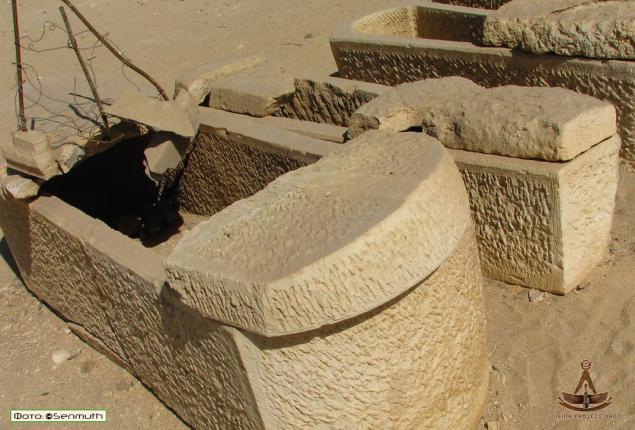
Sopsno i.
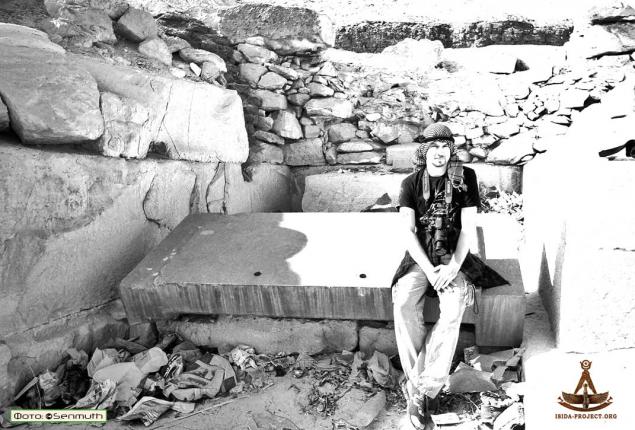
Maybe somewhere I could be wrong, but it can always be corrected.
via

Sarcophagus of Djoser
Let's start with the pyramid of Djoser. Speed, the very first pyramid. And it is the first sarcophagus, but he is not quite familiar to us. Given the form in which the structure is now making a good description is not easy.
Inside undergoing restoration, and the sarcophagus itself is surrounded by scaffolding (there probably is not wood, and the design for the descent down). The sarcophagus is not monolithic, like all others, and is built of granite beams; in size (roughly 4x4 m) is more like a crypt. Find a complete description still fails, but it is a matter of time, after all, the pyramid complex and its well studied.

To get to the pyramid of Djoser failed, so there are any, but their photos.
The sarcophagus is located at the bottom of the shaft inside the huge building. Of course, I want to describe oschueniya inside the pyramid ... there is much darker than any pyramid in Egypt. Mine (approximately 10x10 m) in pretty bad condition; lead somewhere dilapidated moves ... stones hang, threatening to fall at any moment. Returns to the reality of the design of the red-blue "forests". Otherwise - a full immersion into the depths of the ancient and very dark buildings.

This is the first (or one of the first) massive sarcophagi of ancient Egypt.
Stone fallen from the top is still sticking in the "wound" sarcophagus.

Old photo. Here's mine without design

Dock of the film photo. On the sarcophagus.

Landslides bury the sarcophagus ...

Sarcophagus Sekhemkhet
Successor Djoser Sekhemkhet began to build a similar step pyramid, but because of the fact that, most likely, he did not return from a military campaign to Sinai, the pyramid was left unfinished, and, in addition, was sealed. When she unearthed in the last century Ghoneim, all thought to be in a sealed sarcophagus mummy of Pharaoh ... Everyone was waiting for the opening of Tutankhamen in the spirit ... but the sights of dozens of cameras, open the sarcophagus was completely empty. Alas, though the discovery of the pyramid was an important point in Egyptology, Ghoneim was driven to suicide.

Get inside there is no way: the entrance was buried under a mass of sand, mine, too, is likely to fall asleep. Given that the passages were so dilapidated and out of a number of earthquakes there generally is not known in what state it is still closed even for researchers.

Photos from the book Ghoneim "Lost Pyramid»

Unprepossessing burial chamber with the alabaster sarcophagus.

The interesting catch that is not familiar to Egyptian sarcophagi

Images from the dock. film, where Hawass climbs in Buried Pyramid and watches Where did the mummy of the king))

Mastaba 17
Nameless Mastaba at Meidum pyramid.
But who knows, and the interior is like a pyramid, maybe it was a cult pyramid, which is then redrawn at a later burial.
Inside the massive granite sarcophagus.

The lid ajar, propped ancient wooden mallet is likely or robbers, or researchers. Already a classic look, but treated fairly rough.

Neither inside nor outside any inscriptions or ornaments.

One of the first sarcophagi of ancient Egypt in all its glory, is close to the classical forms of stone sarcophagi.

The sarcophagus in the pyramid at Saqqara Tatie.
Partly destroyed pyramid friend Tatie of 6 dynasties. It was 5-6 in the era of the dynasty, in some pyramids is the "Pyramid Texts." The sarcophagus of basalt. The cover is not shifted, but the piece already broken out to get to the content.

Magic formula, specifying what to do in that light, etc. Ie in fact, this is the first set of Book of the Dead on the walls of tombs. The ceiling of the plurality of stars.

Inside there are already signs. Processing as we see a fairly simple, tapping traces visible to the naked eye.

But on the reverse side there is a track around which otlantovedy excited, me and one time too.

Giza. Entrance to the tomb Seshemnefera, a senior official of the fourth dynasty.

Inside the sarcophagus. The lid ajar.

As we can see, and it is pretty rough treatment and corresponds to the epoch of the pyramid builders.

Headless Pyramid at Saqqara (presumably Pharaoh Merikare, 6 or 10 Dynasty). And what is left of the sarcophagus. Once the lid. But what. Here it affects the quality of performance. Carp almost to nothing. The pyramid was first discovered by the German archaeologist Karl Lepsius in 1842 and named the "Headless Pyramid" because of the total absence of its outer part. Only in 2008 the team luck Zahi Hawass. It took half a year to remove the 7-meter layer of sand, 166 years dozing find Karl Lepsius.
More details here: isida-project.org/egypt_2012/saqqara_headless.htm

Surprisingly, the pyramid was completely destroyed, and the lid of the sarcophagus was found in excellent condition.

From the sarcophagus were only miserable fragments. Traces complicated, but as we can see (at closer. Pending) they are traces of manual processing with abrasive. Overall, the cap does not fit in a number of sarcophagi of the Old Kingdom.

Serapeum
Sarcophagi shocking in its power, it is considered that they were not even for people to create.
Each original, the quality is also "floats» ...
Some sarcophagi (the photo), which is well show that in sight no space accuracies, which broadcast some uchOnye, dislikes Ancient Egypt and mleyuschie from green men or otlantov. This affects how people were able to create such and still ask the question: how, why all the same, and as they did, and how did that.

Rough handling, traces of the masons. Geometry - lame.

With all the massiveness seen enough gross flaws

Forms stunning

Right light shows all the flaws processing. Grind already on a curved surface.

Here and without glasses can be seen that there is no perfect (super- machine, otlantskimi) processing and does not smell.

And, of course, that this masterpiece can not skip past.

It is in the Cairo Museum.
Yes, sarcophagi are huge, they give almost no fear, and wholly admirable. Fear, because it is difficult to imagine what strength to move the creation of the "boxes", and admiration, because it did our ancestors, with a view, from which emanates a hidden beyond the grave horror

And finally, that there was quite sad.
Meidum. Sarcophagi with fittings.

Sopsno i.



